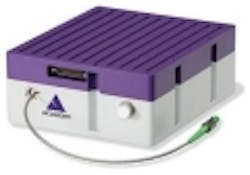QinetiQ to demonstrate submarine laser communications system during RIMPAC exercise in June 2012
ARLINGTON, Va., 26 Sept. 2010Submarine laser communications experts at QinetiQ North America Operations LLC in McLean, Va., are building a submarine tactical information network for the U.S. Defense Advanced Research Project Agency (DARPA) in Arlington, Va. QinetiQ will provide the system called Tactical Relay Information Network (TRITON) to the U.S. Navy for demonstration and evaluation during a naval exercise in 2012 under terms of a $31.8 million DARPA contract awarded Friday.
TRITON is a blue-spectrum free-space laser communications system to link submerged submarines with nearby aircraft for anti-submarine warfare (ASW). QinetiQ is to develop the submarine communications system in time for the Navy's Rim of the Pacific (RIMPAC) exercise in June 2012. The QinetiQ TRITON system is to help DARPA scientists validate improvements in blue lasers, and demonstrate this technology's ability to link submarines and aircraft while the submarines are submerged and underway.
The TRITON project builds on technology DARPA developed in the 1990s under the Tactical Airborne Laser Communications (TALC), which tested blue-green laser communications to link submerged submarines with Navy P-3 maritime patrol aircraft. TALC matched a blue laser to a cesium atomic line resonance receiver at 455.6 microns; the downlink was a green diode-pumped laser compatible with existing submarine receivers at 532 microns.
The Navy wants submarine laser communications to reduce its reliance on towed-buoy receivers, to enhance the communications reliability and data throughput to ballistic missile submarines, and to enhance coordination among aircraft and fast attack submarines for ASW.
As far as technological electro-optical challenges are concerned, TRITON seeks to overcome the limitations that sunlight poses to submarine laser communications, which requires a high peak power laser and an optical filter with narrow spectral bandwidth, high transmission, and wide-field-of-view. Both components must operate in the ocean's blue-green optical window, with blue being better in clear water in the open ocean (Jerlov type IB/II), and green being better in murky coastal waters (Jerlov type III).
The QinetiQ TRITON submarine laser communications prototype will have uplink and downlink transceivers, using an aircraft as a surrogate satellite/medium-to-high altitude aircraft platform. For more information contact QinetiQ North America online at www.qinetiq-na.com, or DARPA at www.darpa.mil.
